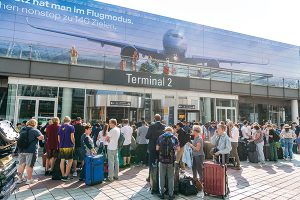Bloomberg
We’re probably going to have to fly less. And when we do board a plane, it’s going to cost more — a lot more, one way or another. Those are the conclusions of a new report by the nonprofit International Council on Clean Transportation, which analysed how the airline industry could cut emissions in line with global climate goals.
People will “still be able to fly in the future and do so with a clean conscience,†said Brandon Graver, a co-author of the study and a senior aviation researcher at the organisation. “But it’s going to be expensive, and we need to have discussions on who is going to pay for that.â€
The airline industry’s main lobby group set a net zero emissions target for 2050 last year, and the United Nations agency overseeing the industry will set its own climate goal later this year. In 2015, more than 190 countries agreed to reduce emissions to a level that would keep future warming to below 2 degrees Celsius, ideally to 1.5 degrees, compared with preindustrial levels. (Progress update: Global surface temperatures have risen 1.1 degrees to date, on pace to hit about 3 degrees this century.)
Aligning aviation with the Paris goals “is possible but will require significant ambition and investment,†warned the new report. In every scenario, the largest pollution reductions come from the same source: sustainable aviation fuels, or SAFs. The most ambitious path calls for alternative fuels to comprise 17% of aircraft fuel use by 2030 and 100% by 2050. In a more moderate scenario, SAFs only made up 3% of aircraft fuels by 2030 and 50% of fuel use by mid-century.
Sustainable fuels are currently a lot more expensive than traditional jet fuel. The report suggests that government policies could encourage the use of SAF by offering tax breaks and other incentives while also making fossil fuels more expensive. Either way, the airlines will likely pass at least some of the higher costs on to passengers and customers.
Compared to a status-quo, do-nothing pathway, the most aggressive carbon-reduction scenario leads to a 7% drop in passenger traffic and a 22% increase in ticket prices by 2050, driven by a 70% rise in fuel costs. Even then, the airline
industry would only be consistent with a 1.75-degree warming target, still higher than the Paris ideal.
The aviation industry is “a really hard sector to decarbonise,†if not the most difficult one, said Samantha Gross, director of Brookings’ Energy Security and Climate Initiative and who was not involved in the study.
 The Gulf Time Newspaper One of the finest business newspapers in the UAE brought to you by our professional writers and editors.
The Gulf Time Newspaper One of the finest business newspapers in the UAE brought to you by our professional writers and editors.
